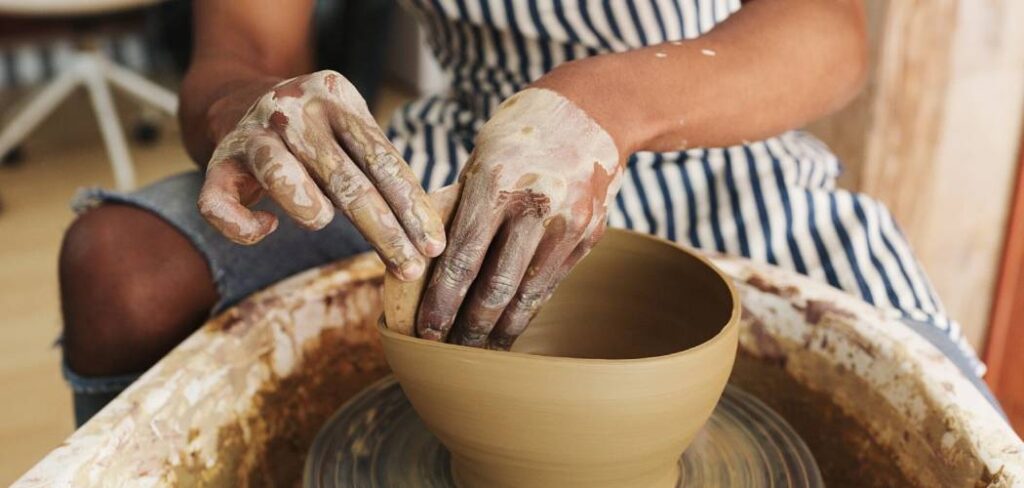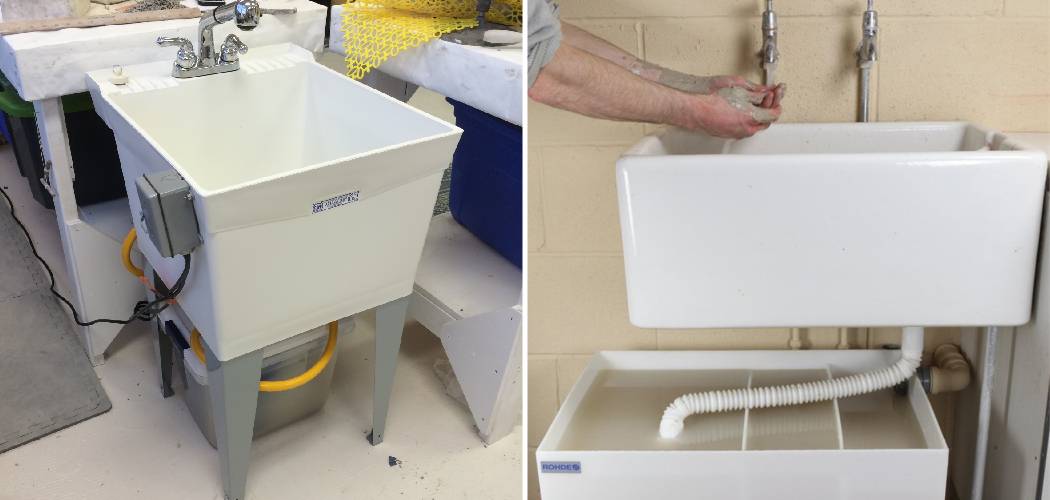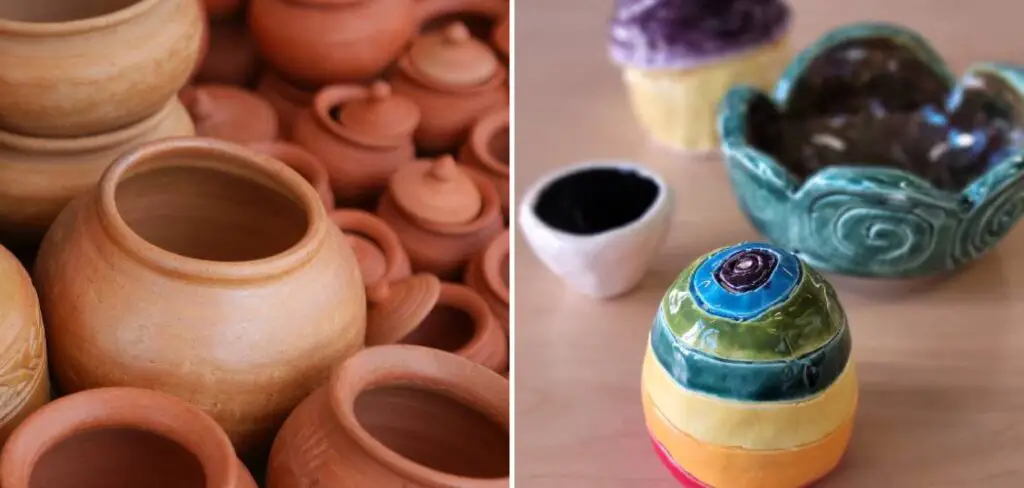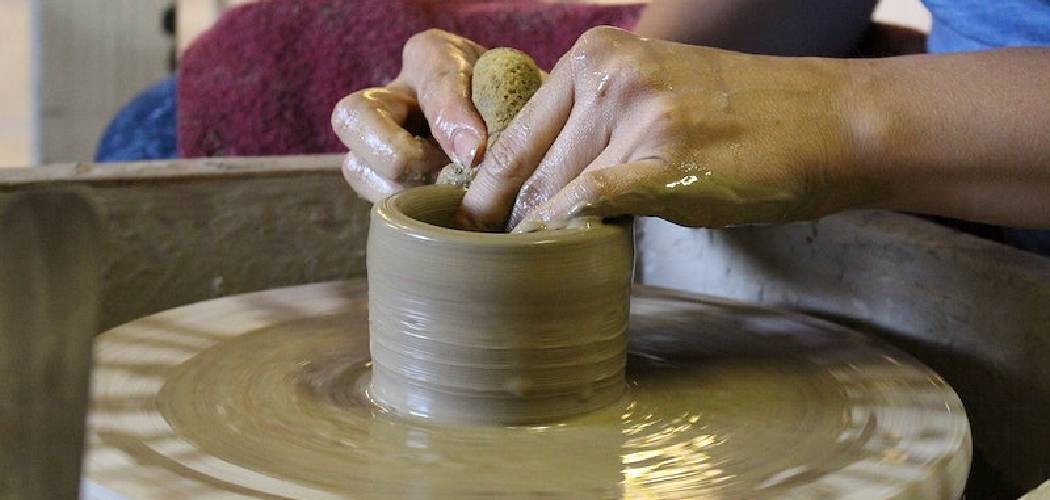Pottery, a craft as old as civilization itself, has witnessed a resurgence in popularity in recent years. Yet, for many, the question looms: Is pottery an expensive hobby? Delving into this query reveals a fascinating blend of factors, from the initial investment in materials and equipment to ongoing costs and the potential for monetizing creations.

In this article, we’ll explore the economics of pottery as a hobby, weighing its costs against the joys and rewards it offers to enthusiasts. Whether you’re a curious beginner or a seasoned artisan, understanding the financial landscape of pottery can enrich your experience and guide your creative journey.
Table of Contents
Why Potting Is Growing in Popularity as A Hobby?
The growing popularity of pottery as a hobby can be attributed to several key factors. First and foremost, the digital world we live in has spurred a counter-movement that celebrates the tactile, the tangible, and the real. Pottery offers a hands-on experience that provides a break from the screen, allowing individuals to engage in a creative process that is both grounding and meditative.
Furthermore, social media platforms have played a significant role in demystifying the craft and inspiring a new generation of potters by showcasing the beauty and diversity of ceramic creations. Additionally, the increasing emphasis on sustainability and handmade goods has led people to appreciate the value and uniqueness of handcrafted pottery, further fueling its popularity.
Through pottery, people find not only an artistic outlet but also a sense of community and connection in shared studio spaces and classes, making it an increasingly appealing hobby for those looking to enrich their lives beyond the digital realm.
Initial Costs of Starting Pottery
The initial costs of venturing into pottery can vary widely, depending on the route one chooses. For those opting to enroll in classes, prices can range from affordable community center workshops to more expensive courses at private studios, often influenced by the duration and intensity of the program. Purchasing your own equipment, on the other hand, involves a significant upfront investment.
A basic potter’s wheel can cost anywhere from $200 for a compact model to over $1,000 for a professional-grade wheel. Kilns, essential for firing finished pieces, are even more costly, with new models starting around $1,000 and can go upward of several thousand dollars depending on size and features.
Additional expenses include tools like carving implements, shaping tools, and glazes, which can add several hundred dollars to the startup costs. However, for those not ready to commit fully, many studios offer rental space and equipment use, providing a middle-ground solution. Despite the initial expense, many find the investment in pottery a worthwhile expenditure for the joy and satisfaction it brings.
Types of Pottery Wheels
Pottery wheels are central to the craft, serving as the potter’s primary tool in shaping clay into beautiful objects. There are several types of pottery wheels available, each catering to different preferences, skill levels, and budget constraints.
- Manual Pottery Wheels: Also known as kick wheels, these are the traditional type of pottery wheel. Operated by foot, a heavy flywheel is kicked into motion to spin the wheel head. These wheels require more physical effort but offer a direct connection to the clay and the creation process, which many potters find satisfying.
- Electric Pottery Wheels: These are the most popular type among modern potters. Electric wheels offer convenience and consistency with variable speeds controlled by a foot pedal or a lever. They range from portable tabletop models for beginners to heavy-duty wheels for professional potters.
- Portable Pottery Wheels: Portable or tabletop electric wheels are designed for space-saving and those who may not have a dedicated pottery studio. They’re lighter and more affordable than standard electric or kick wheels, making them ideal for beginners and hobbyists.
- Battery-Operated Pottery Wheels: A new addition to the market, battery-operated wheels offer the ultimate in portability, enabling potters to work outside or in areas without access to power. While they might not offer the same power or capacity as their stationary counterparts, they’re excellent for small projects and demonstrations.
Types of Kilns
Choosing the right kiln is crucial for a potter, as it significantly affects the outcome of their creations. Kilns are sophisticated equipment used for firing pottery, turning raw clay into ceramics by reaching high temperatures. There are various types of kilns, each with its unique features and functionalities.
- Electric Kilns: These are the most common type of kilns found in pottery studios and are prized for their convenience and ease of use. Electric kilns heat the ceramics with electric coils and allow for precise temperature control, making them suitable for beginners and professionals alike. They are available in a variety of sizes, from small table-top versions to larger models that can accommodate substantial quantities of pottery.
- Gas Kilns: Gas kilns use either natural gas or propane as fuel and are known for their ability to produce rich, vibrant glaze colors, especially in reduction firing. These kilns can reach higher temperatures than electric kilns and offer a certain level of unpredictability in the outcomes, which many potters find appealing for creating unique effects.
- Wood Kilns: Firing with wood is one of the oldest methods and is revered for the distinctive, earthy qualities it can impart to ceramics. Wood kilns require a considerable amount of time and physical involvement, as the wood must be continually fed into the kiln throughout the firing process. The interaction between ash, flame, and pottery creates unique patterns and textures, making each piece a one-of-a-kind creation.
- Raku Kilns: Specifically designed for the raku firing technique, these kilns are typically smaller and portable. Raku firing is a rapid, low-temperature firing process that involves removing pottery from the kiln while it’s hot and placing it into materials like sawdust or leaves to achieve unique finishes. Raku kilns are often powered by propane and allow potters to engage in this dramatic and immediate firing method.
- Microwave Kilns: A modern innovation, microwave kilns are small and can fit inside a standard microwave oven. They are primarily used for small projects, such as firing glass or small ceramic pieces. While not suitable for larger pottery works, they offer an accessible and cost-effective option for beginners or those with limited space.
Trimming Tools
Trimming tools are essential in the pottery making process, allowing potters to refine and perfect their creations before the final firing. These tools are used to remove excess clay, create smooth surfaces, and add intricate details. Here’s an overview of some common trimming tools used in pottery:
- Loop Trimming Tools: These come in various shapes and sizes, with looped metal ends designed for removing large amounts of clay. They are perfect for shaping and smoothing the pottery’s outer and inner surfaces.
- Rib Tools: Made from wood, metal, or silicone, rib tools are used to shape, smooth, and compress clay. Their flexible edges adapt to different curves and angles, making them ideal for achieving a flawless finish.
- Needle Tools: A sharp needle tool is invaluable for precise trimming, carving, and adding fine details. It can also be used to pierce holes, cut soft clay, and remove imperfections.
- Wire Clay Cutters: These are used to cut through clay with ease, particularly useful for removing the top or bottom of a piece that’s been thrown on the wheel. They consist of a thin wire stretched between two handles.
- Scrapers: Scrapers, made of metal or plastic, are used to smooth and level surfaces. They can also be utilized to remove excess clay and imperfections, ensuring an even finish.
- Sponges and Chamois: While not exclusively trimming tools, sponges and chamois are used in the trimming stage to smooth and soften the clay surface. They can be gently applied to remove tool marks and to compress the clay for a silky finish.
Studio Space Rent
Securing the right studio space is a pivotal aspect of a potter’s creative and production process. The ideal studio not only accommodates the necessary equipment like wheels and kilns but also provides a serene and inspiring environment for artistic exploration. When considering studio space rent, several factors come into play:
- Size and Layout: The studio’s size should be ample enough to house equipment comfortably and allow for ease of movement. The layout is also critical, with distinct areas designated for different stages of the pottery making process, including wet work, drying, glazing, and storage.
- Location: Location impacts both the accessibility of the studio and the financial cost. Studios located in urban centers may offer greater visibility and access to a customer base but usually come with a higher rent. In contrast, more remote locations might be less expensive but harder for clients to reach.
- Ventilation and Safety: Proper ventilation is crucial, especially in studios where kilns are regularly used. The studio should have adequate ventilation systems to ensure the safe discharge of fumes. Additionally, safety measures like fire extinguishers and first-aid kits should be readily available.
- Utilities and Amenities: Access to utilities such as water for clay mixing and cleanup, electricity for operating electric kilns and wheels, and a reliable heating system for year-round work are essential. Other amenities, like a small kitchenette or a restroom, can provide added convenience.
- Lease Terms: Understanding the lease terms, including the duration, rent amount, increase rates, and the responsibilities of both the landlord and tenant, is critical before making a commitment. Some leases may also include clauses about modifications to the space, which could be necessary for installing heavy equipment like kilns.
How to Get Into Pottery Cheap
Getting into pottery doesn’t have to break the bank; there are several cost-effective ways to explore this rewarding craft:
- Community Classes: Many community centers and local art schools offer pottery classes at a fraction of the cost of private lessons. These classes often provide all the necessary materials and access to equipment, making it an excellent way to get started without a large upfront investment.
- Online Tutorials: There’s a wealth of free or low-cost pottery tutorials available online. Platforms like YouTube have countless instructional videos covering everything from basic techniques to advanced projects. While you’ll need to acquire some basic supplies, learning online allows you to pace yourself and select specific areas of interest.
- Shared Studio Space: Some art studios offer memberships or shared space opportunities, where you can access equipment and space for a monthly fee that’s much less than renting a solo studio. This also provides a community environment where you can learn from fellow potters.
- DIY Tools: Many pottery tools can be made or substituted with items you already have at home. For instance, a plastic credit card can work as a rib, and a needle from a sewing kit can function as a needle tool. Getting creative with what you have can significantly reduce costs.
- Buy or Borrow Used Equipment: Look for used pottery wheels or kilns online or check with local pottery communities. Many potters upgrade their equipment and sell old ones at reduced prices. Borrowing equipment from a friend or a community studio can also be a way to start without having to make large purchases.
Investing time in learning and being resourceful with materials and equipment can make pottery a more accessible and enjoyable endeavor for beginners with a limited budget.
Conclusion
In conclusion, while pottery can indeed entail initial expenses, it ultimately proves to be a hobby that offers immense value beyond monetary considerations. The joy of creating something beautiful with one’s own hands, the therapeutic benefits of working with clay, and the sense of accomplishment derived from mastering new techniques all contribute to the richness of the pottery experience.
Additionally, the potential for selling one’s creations can offset costs and even turn pottery into a profitable venture. Moreover, with the availability of resources such as community studios, shared equipment, and online tutorials, aspiring potters can minimize their financial investment while maximizing their learning opportunities. Thanks for reading our blog post on Is pottery an expensive hobby! We hope you found it helpful and informative. Happy crafting!





